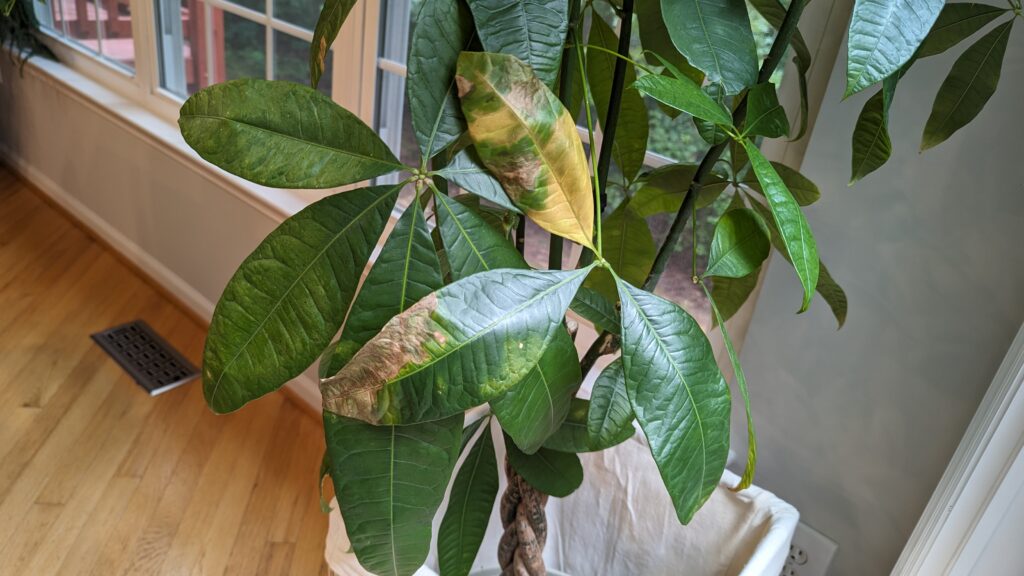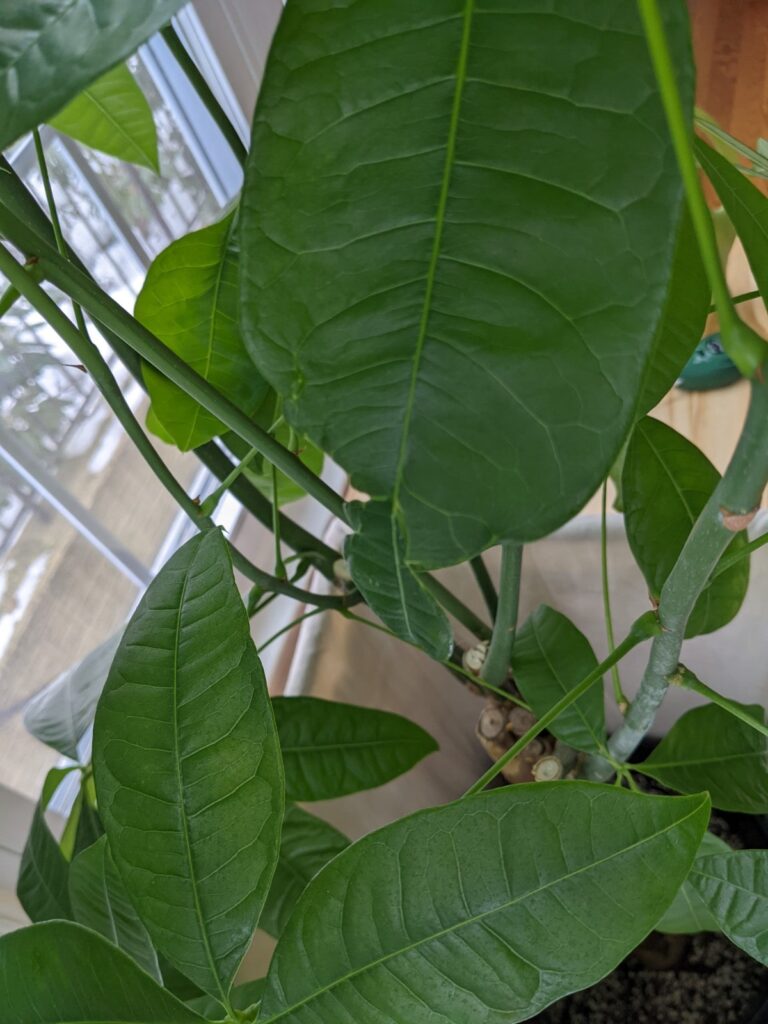Money Tree Plant Problems
Money Trees are houseplant mainstays. You can find them almost anywhere plants are sold. I often see small ones sold in the floral section at my grocery store. Larger ones can be found at a plant nursery or even a home improvement store. Money Trees are often sold as several trunks braided together in one single pot. The leaves grow five or six on a stem. Money Tree plants can be easy to care for but they aren't without problems. I'll cover some of the more common Money Tree plant problems and what you can do to fix them in this post.
Money Tree Plant Problems
Watering Problems
Watering problems can present itself in several ways. Your Money Tree leaves may begin to turn yellow or brown. In addition, the leaves may become droopy. The leaves may even begin drying out. Water problems can also result in in your Money Tree losing leaves. These are all possible signs of over or underwatering.
Let's talk about overwatering first. An overwatered Money Tree can display all of the symptoms mentioned above. In the case of overwatering, the leaves are most likely to yellow and brown before they dry out and fall off. How do you tell if you have overwatered your Money Tree? Check the soil to see if it feels wet. Does your pot have adequate drainage holes that excess water can run freely through? It might be good to gently lift your plant out of its pot to examine the soil and roots. This will help you assess the damage of an overwatered plant. If the roots have begun to rot, then you need to take action. Rotten roots are darker brown and squishy. To fix an overwatered plant you will need to root prune, repot, and hope for the best. I have a whole post on salvaging an overwatered plant you can follow.

An underwatered Money Tree may also be present the leaf symptoms I mentioned above. It doesn't help that over and underwatering show similar signs. I'll try to help illuminate more. Like an overwatered plant you check for underwatering the same way, you want to check your soil moisture. If you want to be precise use a soil moisture meter. I us mine in my regular watering regimen to check the soil moisture before I water any plant. It helped me get better at knowing how quickly my plants dry out, how often to water, and how much water to provide..

Fertilizer Problems
Fertilizing issues can also cause your Money Tree plant problems. If you have nutrient issues, some visible signs you might see from your Money Tree will be yellowing leaves or even misshapen leaves. You can see an example of a misshapen Money Tree leaf below, where the tip of the leaf doesn't look normal. Both over-fertilizing and under-fertilizing can cause problems.

Most plant fertilizers contain different ratios of the macro-nutrients n-p-k, or nitrogen, phosphorus, and potassium. Nitrogen primarily promotes leaf growth, phosphorus promotes root development and budding/fruiting, and potassium is for general plant health. If you're experiencing leaf issues it may be that your soil is deficient in a nutrient or that some nutrient is too abundant. Depending on whether you have over- or under-fertilized the solution is different. You need to stop fertilizing an over-fertilized plant and you may also need to flush the soil to wash away the excess nutrients. If it's under-fertilized you'll need to start fertilizing and generally a balanced fertilizer will work fine.
The biggest obstacle is determining whether you have a nutrient issue to begin with. A lot of the visual cues could be other issues so it's not easy to pin down. You might go off of memory as to whether you have been fertilizing regularly and following the package's instructions. All fertilizers will have specific instructions on dilution, dosage, and frequency of fertilization. The best way to know for sure is to test your soil. Soil rapitests are convenient for that. They are relatively cheap and give you a definitive answer about each of the three nutrients and the ph level.

Pest Problems
Pest are also a cause of Money Tree plant problems. Damage from pests will appear as leaf discoloration, typically yellowing, but it will be speckled or splotchy. Pests feed on plant matter so you might notice groups of small yellow dots. If you see any actual bugs or tiny webs, then you most certainly have a pest problem.
Some common pests that like to attack Money Trees are aphids, spider mites, scale, and mealybugs. I recommend looking under the leaves for aphids, scale, and mealybugs they often hang out there. For spider mites, you're looking for small webs that often collect around the petiole, leaf tip, and underside of the leaves.
As soon as you see pests, quarantine your plant away from other plants as soon as possible. Do your best to remove the pests you can see. Some pests, like aphids and spider mites, you can spray them off of your plant off with a hose outside or in the shower. Scale and mealybugs have and armor-like shell and must be removed manually. People typically use alcohol on a cotton swab to do so. Next, spray your Money Tree with insecticide. Organic insecticides, like neem oil, work as well as non-organics, like insecticidal soaps. Be sure follow the instructions. They may seem like overkill, but it's extremely important to treat your plant for multiple weeks to avoid reinfestation.
What Happens After You Fix the Problem
Money Trees are great at bouncing back. Hopefully this post puts you on your way to diagnosing and fixing your Money Tree problems. My own Money Tree has survived under-watering and spider mites and it always comes back and continues to grow beautiful and tall. If your Money Tree is looking worse for the wear after you've fixed it, don't hesitate to prune away the bad areas. I have a step-by-step tutorial from the last time I did a big prune of my Money Tree.
Add new comment